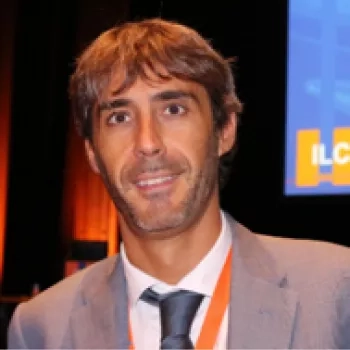The Impact of Artificial Intelligence on Diagnosing Prostate Cancer: Review of the Literature and Preliminary Experience
During the last 10 years, we observed a progressive decrease of pathologists while the number of information released in a pathological report increased dramatically. The gap generated by these opposite trends is likely to be filled by Pathology 2.0 or e-Pathology. This latter rests on the transition from glass to digital slide (WSI) which in turn allow the use of specific software, mostly based on Artificial intelligence algorithm, fastening and improving the routine activity.
During this lecture, Prof. Luca Di Tommaso will focus on one of the settings where e-Pathology is ready to be introduced in the clinical practice: the screening and diagnosis of prostatic cancer in biopsy specimen.
About the presenter

The main field of Luca’s research is Liver Pathology where he contributed to the identification of biomarkers characterizing malignant transformation of hepatocellular nodules. Some of these are now part of the 5th edition of WHO guidelines for the diagnosis of hepatocellular carcinoma.
Other fields of interest are Breast, Thymic and Thyroid pathology. In each of these fields, Luca contributed to identify novel entities. Accordingly, he is one of the authors of the 5th edition of WHO Classification of Thymic Tumors.
Luca has a strong commitment for History of Medicine: this latter and Pathology, are his teaching topics at Humanitas University.
Recently, he developed a strong interest in the field of digital-, computational- and augmented- pathology. These settings likely represent the future of our discipline, under the definition of e-Pathology.
Leica Biosystems Knowledge Pathway content is subject to the Leica Biosystems website terms of use, available at: Legal Notice. The content, including webinars, training presentations and related materials is intended to provide general information regarding particular subjects of interest to health care professionals and is not intended to be, and should not be construed as, medical, regulatory or legal advice. The views and opinions expressed in any third-party content reflect the personal views and opinions of the speaker(s)/author(s) and do not necessarily represent or reflect the views or opinions of Leica Biosystems, its employees or agents. Any links contained in the content which provides access to third party resources or content is provided for convenience only.
For the use of any product, the applicable product documentation, including information guides, inserts and operation manuals should be consulted.
Copyright © 2024 Leica Biosystems division of Leica Microsystems, Inc. and its Leica Biosystems affiliates. All rights reserved. LEICA and the Leica Logo are registered trademarks of Leica Microsystems IR GmbH.